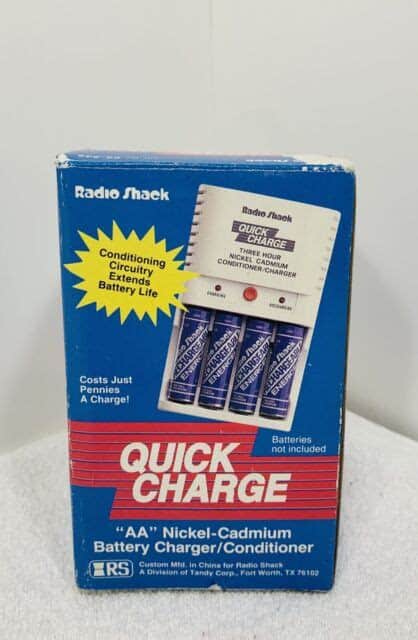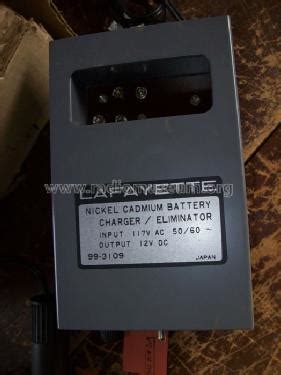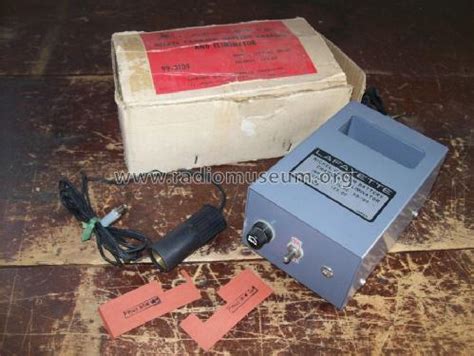Introduction to Cadmium-Nickel Batteries and Chargers
Cadmium-nickel (Cd-Ni) batteries are a type of rechargeable battery known for their high energy density, long cycle life, and wide operating temperature range. These batteries find applications in various fields, such as aerospace, military, and industrial equipment, where reliable and high-performance power sources are essential. To maintain the optimal performance and longevity of Cd-Ni batteries, it is crucial to use a well-designed charger circuit that incorporates a counter chip to monitor and control the charging process.
In this article, we will delve into the intricacies of a cadmium-nickel Battery Charger Circuit diagram, focusing on the role of the counter chip and its interaction with other components. We will also discuss the benefits of using a counter chip in a Cd-Ni charger, the charging process, and the precautions to take while designing and using such a charger.
The Role of a Counter Chip in a Cadmium-Nickel Charger
A counter chip is an essential component in a cadmium-nickel battery charger circuit, as it enables the charger to monitor and control the charging process accurately. The primary functions of a counter chip in a Cd-Ni charger include:
- Monitoring the number of charge/discharge cycles
- Tracking the state of charge (SOC) of the battery
- Preventing overcharging and undercharging
- Balancing the charge among multiple cells in a battery pack
- Communicating with other components in the charger circuit
By performing these functions, the counter chip helps to ensure that the Cd-Ni battery is charged safely and efficiently, maximizing its performance and lifespan.

Benefits of Using a Counter Chip in a Cadmium-Nickel Charger
Incorporating a counter chip in a cadmium-nickel battery charger circuit offers several benefits, such as:
-
Enhanced safety: The counter chip prevents overcharging and undercharging, which can lead to battery damage, reduced performance, and even safety hazards like fire or explosion.
-
Improved battery life: By ensuring that the battery is charged optimally and avoiding overcharging, the counter chip helps to extend the battery’s cycle life and overall lifespan.
-
Better charge management: The counter chip enables the charger to monitor and balance the charge among multiple cells in a battery pack, ensuring that all cells are charged evenly and preventing any single cell from being overcharged or undercharged.
-
Intelligent charging: With the help of a counter chip, the charger can adapt the charging process based on the battery’s state of charge, temperature, and other factors, optimizing the charging efficiency and reducing the charging time.
-
Compatibility with battery management systems (BMS): The counter chip can communicate with other components in the charger circuit and the BMS, allowing for seamless integration and improved overall system performance.

Cadmium-Nickel Battery Charging Process
To understand the role of a counter chip in a cadmium-nickel battery charger circuit, it is essential to have a basic understanding of the Cd-Ni battery charging process. A typical Cd-Ni battery charging process involves the following stages:
-
Bulk charge: In this stage, the charger applies a constant current to the battery until it reaches about 70-80% of its capacity. The counter chip monitors the battery voltage and current during this stage to ensure that the charging process is progressing as expected.
-
Absorption charge: Once the battery reaches the absorption voltage threshold, the charger switches to a constant voltage mode, gradually reducing the charging current while maintaining the voltage at a constant level. The counter chip tracks the charging current and determines when the battery is fully charged.
-
Trickle charge: After the absorption charge stage, the charger continues to supply a small current to the battery to compensate for self-discharge and maintain the battery at its full capacity. The counter chip monitors the trickle charge current and prevents overcharging.
Throughout the charging process, the counter chip communicates with other components in the charger circuit, such as the voltage and current sensors, to ensure that the charging parameters remain within safe limits.

Key Components in a Cadmium-Nickel Charger Circuit
A cadmium-nickel battery charger circuit consists of several key components that work together to ensure safe and efficient charging. These components include:
-
Counter chip: As discussed earlier, the counter chip is responsible for monitoring and controlling the charging process, ensuring optimal battery performance and safety.
-
Voltage and current sensors: These sensors measure the battery voltage and charging current, providing the necessary information to the counter chip for accurate charge control.
-
Charge controller: The charge controller is responsible for regulating the charging current and voltage based on the signals from the counter chip and the voltage and current sensors.
-
Power supply: The power supply provides the necessary energy for the charging process, converting the input AC or DC power to the appropriate voltage and current levels for the Cd-Ni battery.
-
Protection circuits: These circuits, such as overcharge, undercharge, and temperature protection, work in conjunction with the counter chip to ensure that the battery is charged safely and prevent damage due to abnormal conditions.
Designing a Cadmium-Nickel Charger Circuit with a Counter Chip
When designing a cadmium-nickel battery charger circuit with a counter chip, several factors must be considered to ensure optimal performance and safety. These factors include:
-
Battery specifications: The charger circuit must be designed to match the voltage, current, and capacity requirements of the specific Cd-Ni battery being used.
-
Counter chip selection: Choose a counter chip that is compatible with the battery specifications and offers the desired features, such as cycle counting, state of charge monitoring, and cell balancing.
-
Component selection: Select high-quality, reliable components for the charger circuit, such as voltage and current sensors, charge controller, and protection circuits, to ensure accurate and stable operation.
-
PCB layout: Design the printed circuit board (PCB) layout carefully to minimize noise, interference, and power losses, and to ensure proper heat dissipation.
-
Firmware development: Develop the firmware for the counter chip and other programmable components in the charger circuit to implement the desired charging algorithms, safety features, and Communication Protocols.
-
Testing and validation: Thoroughly test and validate the charger Circuit design to ensure that it meets the performance, safety, and reliability requirements for the intended application.
Precautions and Safety Considerations
When working with cadmium-nickel batteries and chargers, it is essential to take necessary precautions and follow safety guidelines to prevent accidents and ensure optimal performance. Some key precautions and safety considerations include:
-
Use the appropriate charger: Always use a charger specifically designed for Cd-Ni batteries, with the correct voltage and current ratings, to prevent overcharging, undercharging, or other damage to the battery.
-
Follow the manufacturer’s instructions: Adhere to the manufacturer’s guidelines for charging, discharging, and storing Cd-Ni batteries to ensure optimal performance and safety.
-
Avoid extreme temperatures: Do not charge or discharge Cd-Ni batteries in extreme temperatures, as this can lead to reduced performance, damage, or even safety hazards.
-
Handle batteries with care: Cd-Ni batteries contain toxic materials and can pose a safety risk if damaged or mishandled. Always handle these batteries with care and dispose of them properly according to local regulations.
-
Regularly inspect and maintain the charger: Periodically inspect the charger circuit for any signs of damage, wear, or malfunction, and perform necessary maintenance to ensure safe and reliable operation.
Frequently Asked Questions (FAQ)
-
What is the difference between a cadmium-nickel battery and other rechargeable batteries?
Cadmium-nickel batteries offer higher energy density, longer cycle life, and wider operating temperature range compared to other rechargeable batteries like lead-acid or nickel-metal hydride (NiMH). However, they also contain toxic materials and require specialized chargers for safe and optimal performance. -
Can I use a charger designed for other battery types to charge a Cd-Ni battery?
No, it is crucial to use a charger specifically designed for Cd-Ni batteries to ensure safe and efficient charging. Using an incompatible charger can lead to overcharging, undercharging, or other damage to the battery. -
How does a counter chip prevent overcharging in a Cd-Ni battery charger?
A counter chip monitors the battery voltage, current, and state of charge during the charging process. When the battery reaches its full capacity, the counter chip communicates with the charge controller to reduce the charging current and switch to a trickle charge mode, preventing overcharging. -
What should I do if my Cd-Ni battery charger is not working properly?
If your Cd-Ni battery charger is not functioning as expected, first, check for any visible damage or loose connections. If the issue persists, consult the manufacturer’s troubleshooting guide or contact a professional for assistance. Do not attempt to repair the charger yourself unless you have the necessary expertise and tools. -
How can I extend the lifespan of my Cd-Ni batteries?
To extend the lifespan of your Cd-Ni batteries, follow these tips: - Use a compatible charger with a counter chip for optimal charging
- Avoid overcharging or undercharging the batteries
- Store batteries in a cool, dry place when not in use
- Handle batteries with care and avoid physical damage
- Regularly inspect and maintain the batteries and charger
Conclusion
A well-designed cadmium-nickel battery charger circuit with a counter chip is essential for ensuring the safe, efficient, and optimal charging of Cd-Ni batteries. The counter chip plays a crucial role in monitoring and controlling the charging process, preventing overcharging and undercharging, and extending the battery’s lifespan.
When designing or using a Cd-Ni battery charger, it is important to consider factors such as battery specifications, component selection, PCB layout, and firmware development. Additionally, taking necessary precautions and following safety guidelines is crucial to prevent accidents and ensure the best performance from your Cd-Ni batteries and charger.
By understanding the intricacies of a cadmium-nickel battery charger circuit diagram and the role of the counter chip, you can make informed decisions when selecting, designing, or using a charger for your Cd-Ni batteries. This knowledge will help you optimize your battery’s performance, extend its lifespan, and ensure safe and reliable operation in your applications.

No responses yet